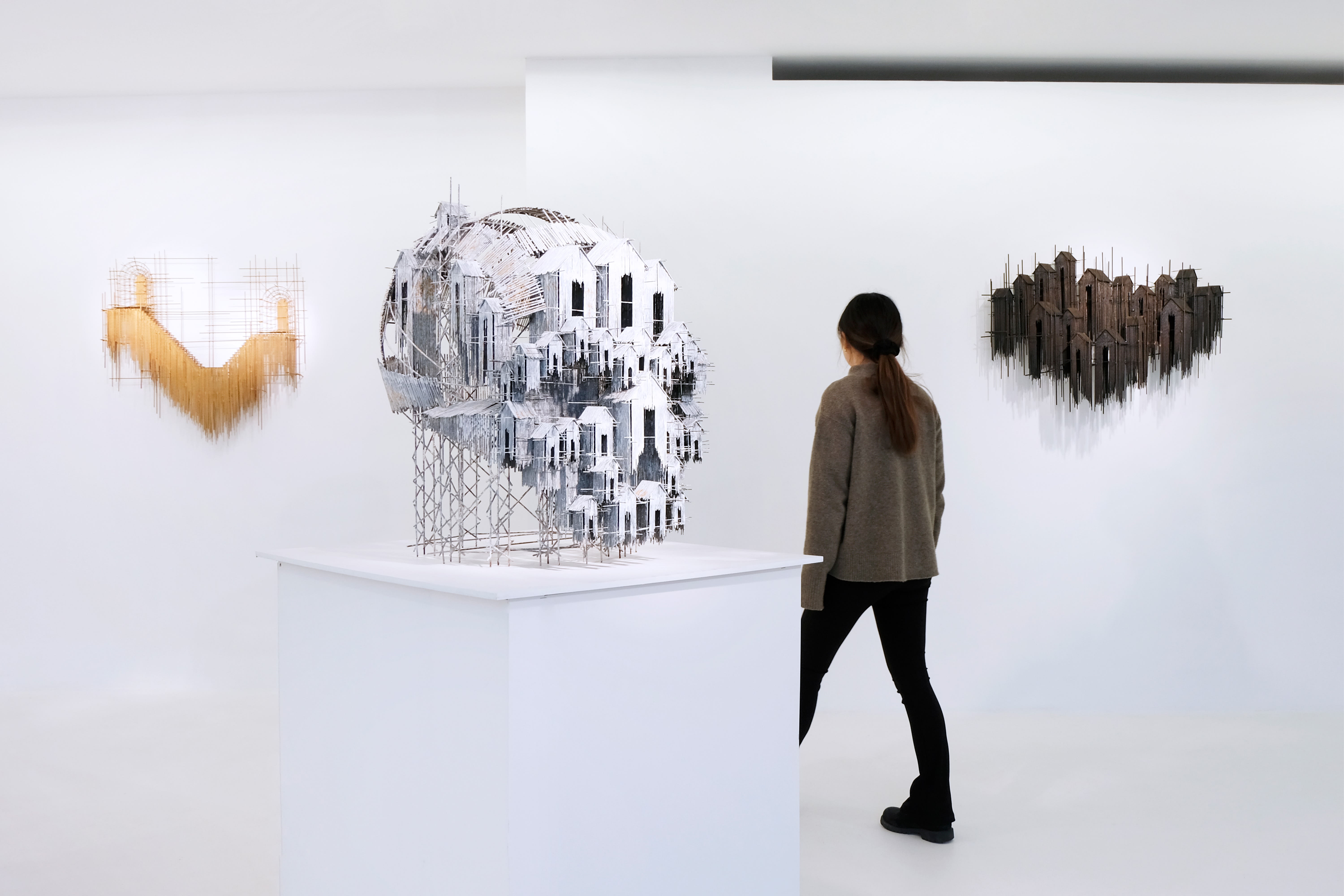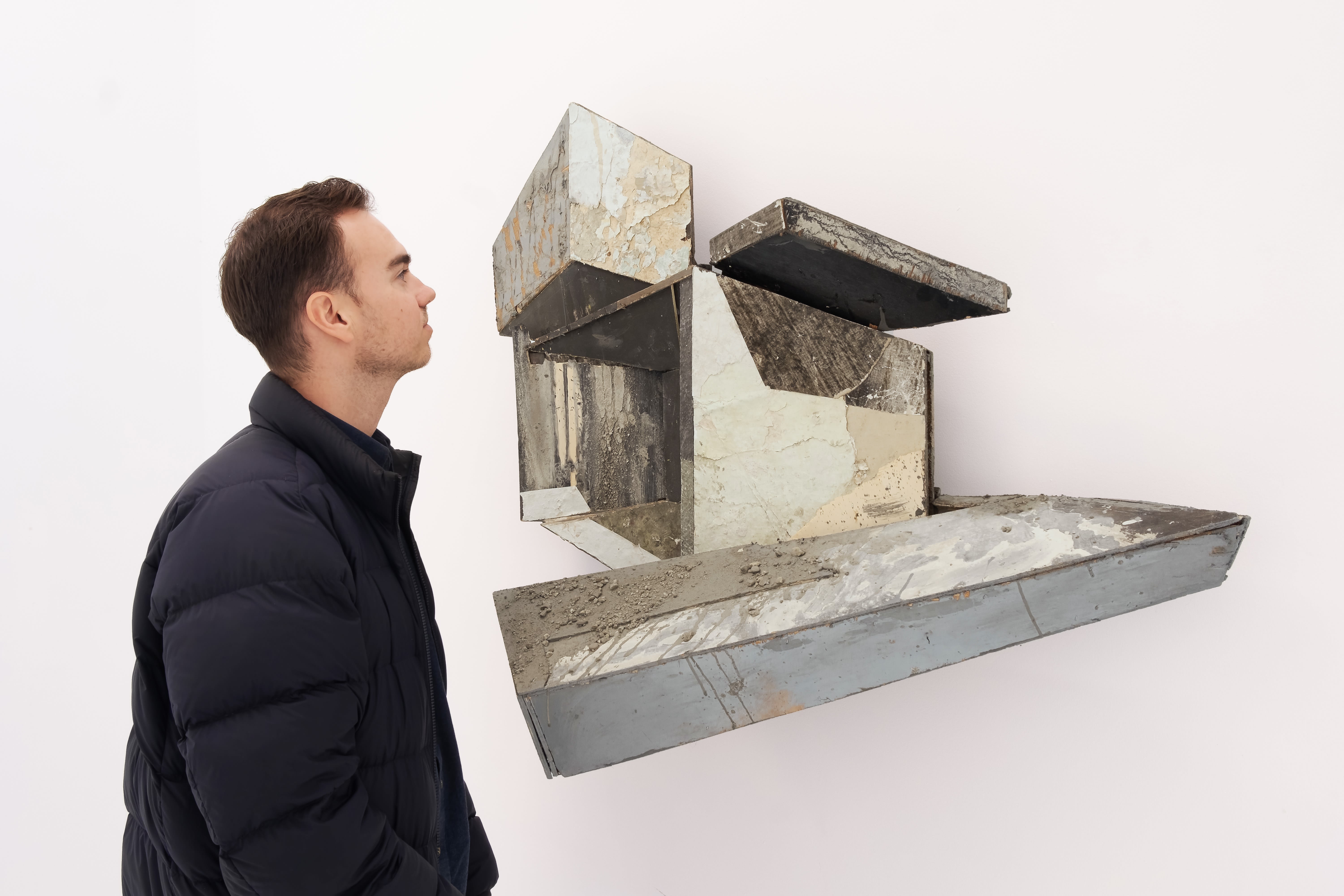
In the realm of contemporary art, artistic creation transcends its traditional boundaries to interact with and even infiltrate the viewer's space. This expansion is embodied in immersive, monumental works, designed not only to be contemplated but also to be touched, traversed, and experienced from ever-changing perspectives. This shifting relationship between artwork and audience becomes an integral part of the artistic process, positioning the viewer in an active role of creation.
"The power of contemporary art lies in its unique ability to awaken and engage our senses."
Materials, Environment, and Interactivity
The works of Pim Palsgraaf are far from static; they unfold within an environment, integrating the specificities of chosen materials and temporal elements. Unlike the constructivist ideals of utilitarian art or the strict autonomy of minimalist pieces, Palsgraaf's creations draw inspiration from assembled reclaimed materials and installation techniques. Resonating with their surroundings, they form a unique, collective relationship between space, artwork, and spectator.
Pim Palsgraaf, Light Behind the wall 05, Mixed media, 120x10x85cm, 2021.
Narration and Temporality
A poetic approach emerges through the scattering of diverse materials and volumes within a space, inviting the viewer to piece together a fragmented narrative. This process incorporates elements of economy, urbanism, society, and history, situating the artwork at the intersection of disciplines such as minimalism and architecture. This interdisciplinary approach enriches the experience, transforming art into a space for mediation.
Sculpture and Architecture: an intrinsic relationship
Contemporary sculpture takes on the forms of constructed pieces, installations, and immersive environments. It transcends mere representation to become the subject, support, and material of a narrative. In dialogue with architecture, sculpture offers the viewer an experience that merges form and space, prompting them to explore the boundaries between art and place. David Moreno’s work is a prime example of this.

David Moreno, Raw&Flow, Solo Exhibition, Macadam Gallery, 2022.
Abstraction and harmony of forms
Minimalist artists emphasize simplicity in form and color, as well as material purity and technical precision. Despite this apparent uniformity, each creative process reveals distinct intentions. Some artists, seeking an immediate connection between image and architecture, employ strict geometry and form tension as a common language. This is evident in François Bonnel’s work, where he structures flat space through horizontal and vertical lines, imbuing the image with a precise, measured rhythm. These linear arrangements create a dynamic dialogue, transforming the flat surface into something vibrant and expressive.
Traditionally a musical concept, rhythm finds a powerful visual equivalent, becoming central to an artwork. Through lines and repetition, artists like James Austin Murray and Daniel Mirchev infuse a visual cadence that structures space and guides the viewer’s eye. Here, rhythm acts as a linear force that animates the piece and draws in the observer.
Daniel Mirchev, Invisible Reflection, Plywood, 210x90x50cm, 2024.
Installation: the essence of the void
Artist Sali Muller delves into the potential of empty space through highly conceptual installations. For Muller, this approach represents an intellectual culmination that gives each work a temporal and energetic dimension. The work transcends mere stylistic choice; it liberates space, creating an atmosphere where emptiness is perceived as an energy-filled continuum.
Contemporary art also stands out for its ability to evoke sensory responses. Artist Åsa Johansson, for instance, combines varied textures and forms to engage the viewer in an experience of touch, color, and visual perception. By elevating the tactile dimension of art, Johansson invites a rediscovery of everyday elements through the lens of sculpture.
Sali Muller, Down the rabbit hole, Safety glass, safety mirror, dichroic, metal, 60x40x10cm, 2024.
Color as atmospheric matter
Kean/Jordan Tran and Jan Kaláb experiment with the interplay between color and space to create an enveloping ambiance. Their abstractions, inspired by the Color Field movement, capture the subtle vibrations of nature and landscape. Working color through fluid gestures, they translate onto canvas an almost spiritual sensation, encouraging the viewer toward contemplation and reflection. For these two artists, this blend of reality, abstraction, and spirituality imbues their work with a meditative depth.
Toward a new poetics of art
Today, the boundary between art, architecture, and design is increasingly blurred, with artists exploring new forms and materials to redefine the limits of sculpture and installation. This multidisciplinary dynamism engages the viewer in an ongoing dialogue with the artwork, where each experience becomes part of a larger whole. Through color, rhythm, or form purity, contemporary art positions itself as a space for meditation and interaction, continually redefining perception.










